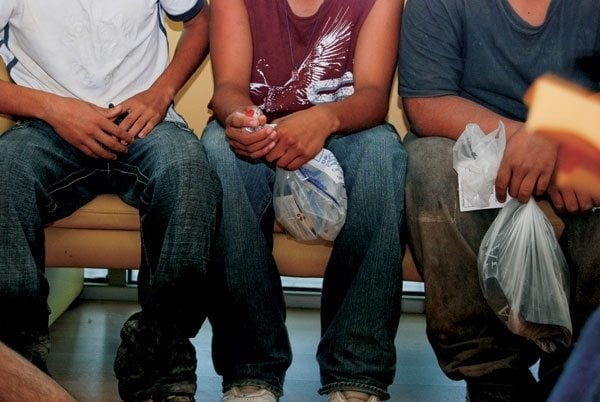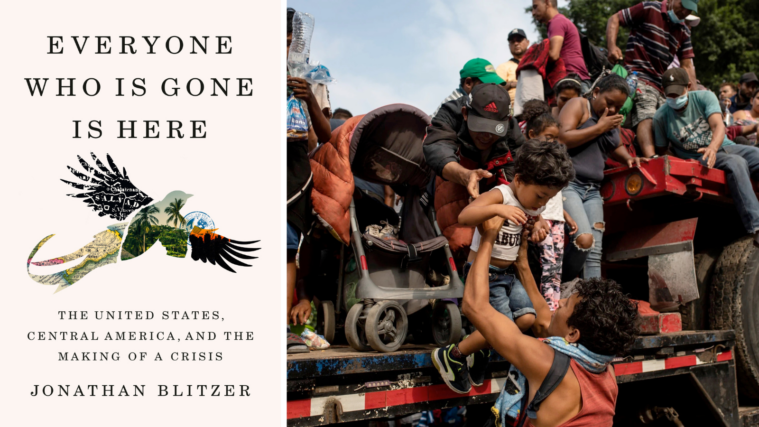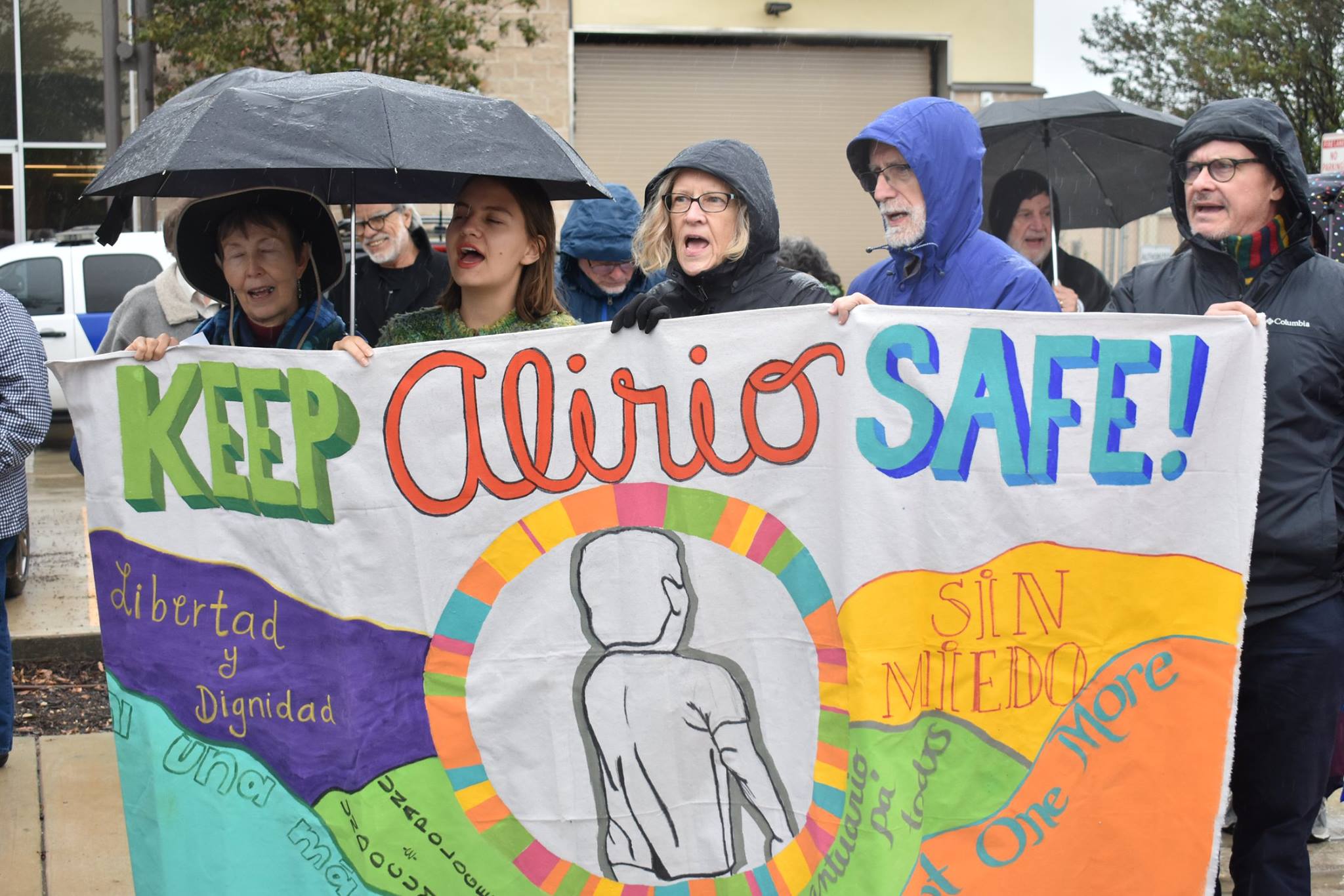
Disease Threat From Immigrant Children Wildly Overstated
The Central American kids arriving in Texas are likely to be better-vaccinated than children in Texas.

With thousands of children from Central America arriving at the U.S.-Mexico border, an old plague is once again sweeping the country—the fear of the diseased immigrant.
“Our schools cannot handle this influx, we don’t even know what all diseases they have,” U.S. Rep. Louie Gohmert (R-TX) said recently. “Our health care systems can’t withstand this influx.”
Fox News commentator Cal Thomas asks, for example, if “the unaccompanied minors pouring over the border…have brought with them proof of vaccination?” Thomas accuses the border-crossers of harboring vaccine-preventable diseases such as “mumps, measles, rubella, polio, tetanus and diphtheria.”
Before demonizing undocumented children, we should look at the facts: The vast majority of Central Americans are vaccinated against all these diseases. Governments concerned about health, and good parents investing in their kids, have made Central American kids better-vaccinated than Texan kids. We fear them not because they are actually sick, but because of powerful anti-immigration narratives that link foreigners to disease.
Consider, for example, Guatemala. According to the United Nations Children’s Fund (UNICEF), Guatemalan kids are more likely than Texans to be immunized for most infectious diseases. Guatemala has universal health care. Vaccines are 100 percent funded by the government.
By comparison, one in six kids in Texas is uninsured, and even insured families often must pay for vaccination. That means that many Texas kids fall behind on vaccinations, or miss them altogether when their family can’t afford a doctor’s visit. Other families refuse vaccination.
Dr. Elizabeth Lee Vliet, a Fox News commentator and former director of the ultra-conservative political group Association of American Physicians and Surgeons, writes in the McAllen Monitor that measles is among the “diseases the United States had controlled or virtually eradicated” that are “carried across the border by this tsunami of illegals.”
Fact check: UNICEF reports that 93 percent of kids in Guatemala, Honduras and El Salvador are vaccinated against measles. That’s better than American kids (92 percent).
Furthermore, it’s absurd to claim that the U.S. has eradicated measles while Central America has not. In fact, measles outbreaks have resurged in some American cities. By contrast, according to the World Health Organization, neither Guatemala nor Honduras has had a reported case of measles since 1990.
Slate physician-writer (and Fox News contributor) Marc Siegel writes that unaccompanied minors “are a likely source” of the mosquito-borne dengue fever spreading to Texas. Siegel ignores two key public health points: First, legal immigrants and travelers are a much larger group than undocumented folks, and just as likely to carry dengue. (I don’t know about y’all, but I’ve never been screened for dengue fever at the Texas-Mexico border.) Second, mosquitoes can fly.
Interestingly, Siegel is the author of three books—Swine Flu: The New Pandemic, Bird Flu: Everything you Need to Know about the Next Pandemic and False Alarm: Profiting from the Epidemic of Fear. That last title must be a memoir.
The narrative that foreigners bring disease has long been used to stir up anti-immigrant sentiment. In the early 1900s, the immigrant cook Mary Mallon—better known as Typhoid Mary—was imprisoned for life for infecting her wealthy patrons with Salmonella typhii.
In his book The Cholera Years, historian Charles Rosenberg describes how Irish immigrants to New York in the 1830s suffered disproportionately from cholera because they lived in poor and crowded neighborhoods. Instead of working to help them, the medical profession blamed the disease on immigrants being “exceedingly dirty.” Irish people were refused medical care, and many “wandered starved and half naked across the Canadian border.”
When Hurricane Katrina devastated New Orleans in 2005, the Latino men who came to work rebuilding the city were accused of spreading infectious diseases such as chlamydia and HIV.
The targeting of vulnerable outsiders whenever disease breaks out is even older than this country. Historian Barbara Tuchman has described how outbreaks of plague in Europe would lead to pogroms. The lynchings of Jews, she writes “began in 1348 on the heels of the first plague deaths.” When we blame immigrants for infectious disease, we participate in a nasty—and deadly—old tradition.
Some diseases do flourish because of unsanitary conditions in the immigrant detention centers. For example, Fox News reports that the Border Patrol union is complaining that an agent “already has contracted the mite-borne skin infection” scabies. Like lice, scabies is annoying but eminently treatable. It spreads anywhere people are in close quarters: summer camps, homeless shelters, college dorms.
While outbreaks of scabies are a decent indicator that conditions in the detention centers are unsanitary, scabies is not the kind of disease that should dictate immigration policy. To get rid of it, you treat the kid and wash his or her bedding.
Tuberculosis (TB) is one of the diseases most calculated to frighten Texans. On the right-wing blog Breitbart Texas, Vliet claims that immigrants with TB “are putting others’ lives at risk,” and that multi-drug-resistant TB is the “most common form” of TB in Latin America.
The latter is simply false: Fewer than 1 percent of TB cases in the Americas are multi-drug-resistant, according to the WHO. Most of those cases are still treatable. According to the Texas Department of State Health Services (DSHS), no cases of the more difficult extensively drug-resistant TB (XDR-TB) were reported here in 2012.
More than 90 percent of Central Americans are vaccinated against TB, according to the WHO. The vaccine, called the BCG, is imperfect. It’s used in countries where TB is still common, but some cases will break through the vaccine’s coverage.
Americans are not routinely vaccinated. According to the state health department, the 1,233 cases of TB that occurred in Texas in 2012 were mostly along the border and in prisons. The disease has stayed crouched in those centers of poverty because it flourishes where people live in close quarters and suffer from diseases like alcoholism and HIV, which knock down their immune defenses. Eradicate poverty, and TB fades away.
Fear of disease is motivating people to move against immigrants. In League City, the City Council voted this week to prohibit the housing or processing of undocumented immigrants. The resolution cited the “threat of communicable diseases reported to be prevalent” among immigrants as a justification for the use of police power to protect “citizens” from these children.
And in Murrieta, California, protesters blocked buses carrying migrant children after it was revealed that some of them had been hospitalized for fevers.
Fear turns sick kids into a threat. But the threat of tuberculosis is overblown. The state health department is screening unaccompanied minors for the disease. Some small percentage of them—like a tiny percentage of Texan kids overall—probably have TB. It can be controlled and treated before it spreads.
Even if these unaccompanied minors did pose a huge tuberculosis threat—which they do not—Texas is equipped to deal with it. We have clinics, first-line antibiotics and even a tuberculosis sanitarium to house folks who can’t keep up with the daily antibiotics on their own.
There are legitimate health concerns associated with human migration. But the narrative that immigrants such as these children are particularly diseased has more to do with fear than it does with science.
Rachel Pearson is a sixth-year MD/PhD student at the University of Texas Medical Branch and the Institute for the Medical Humanities.


